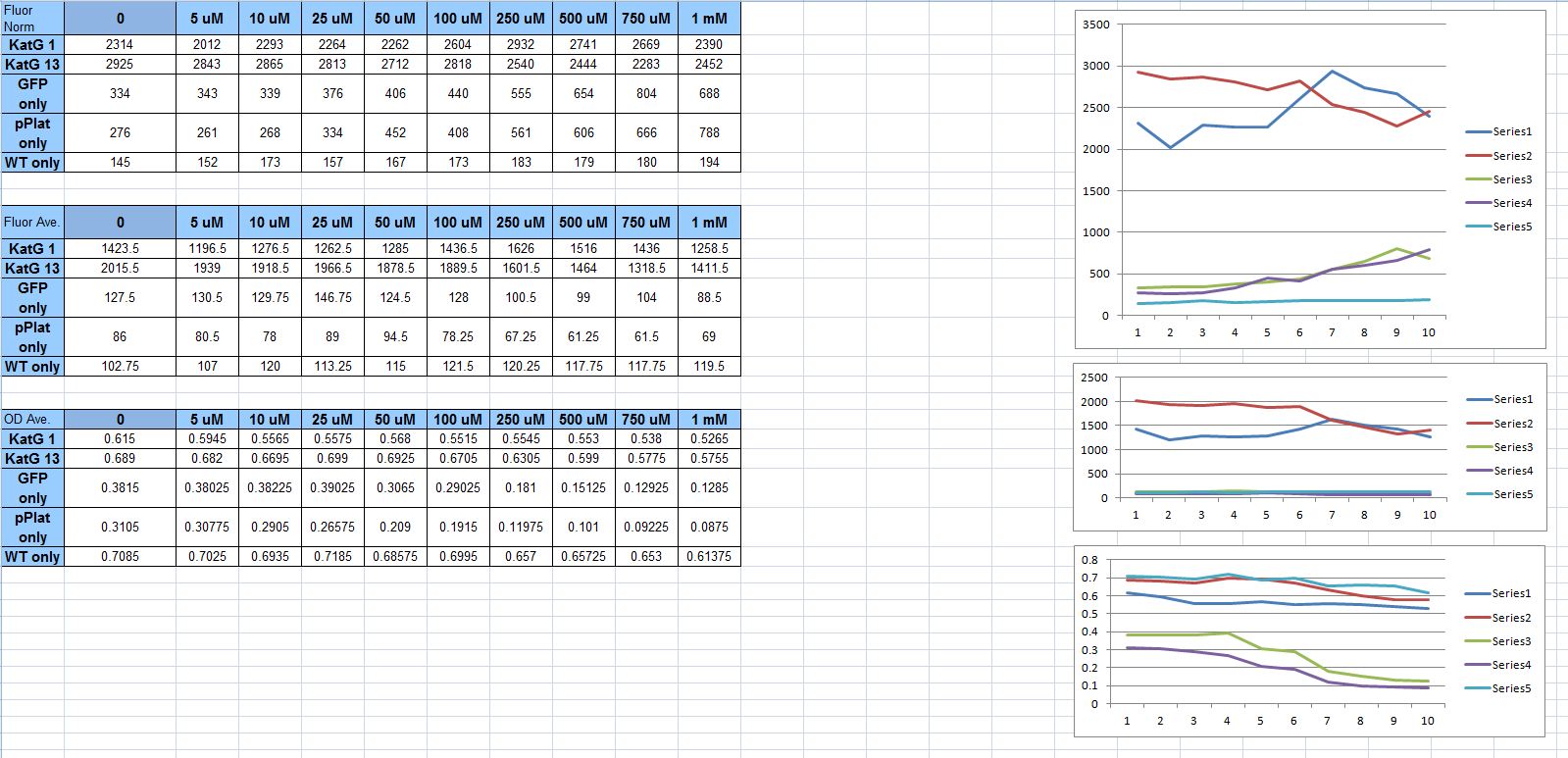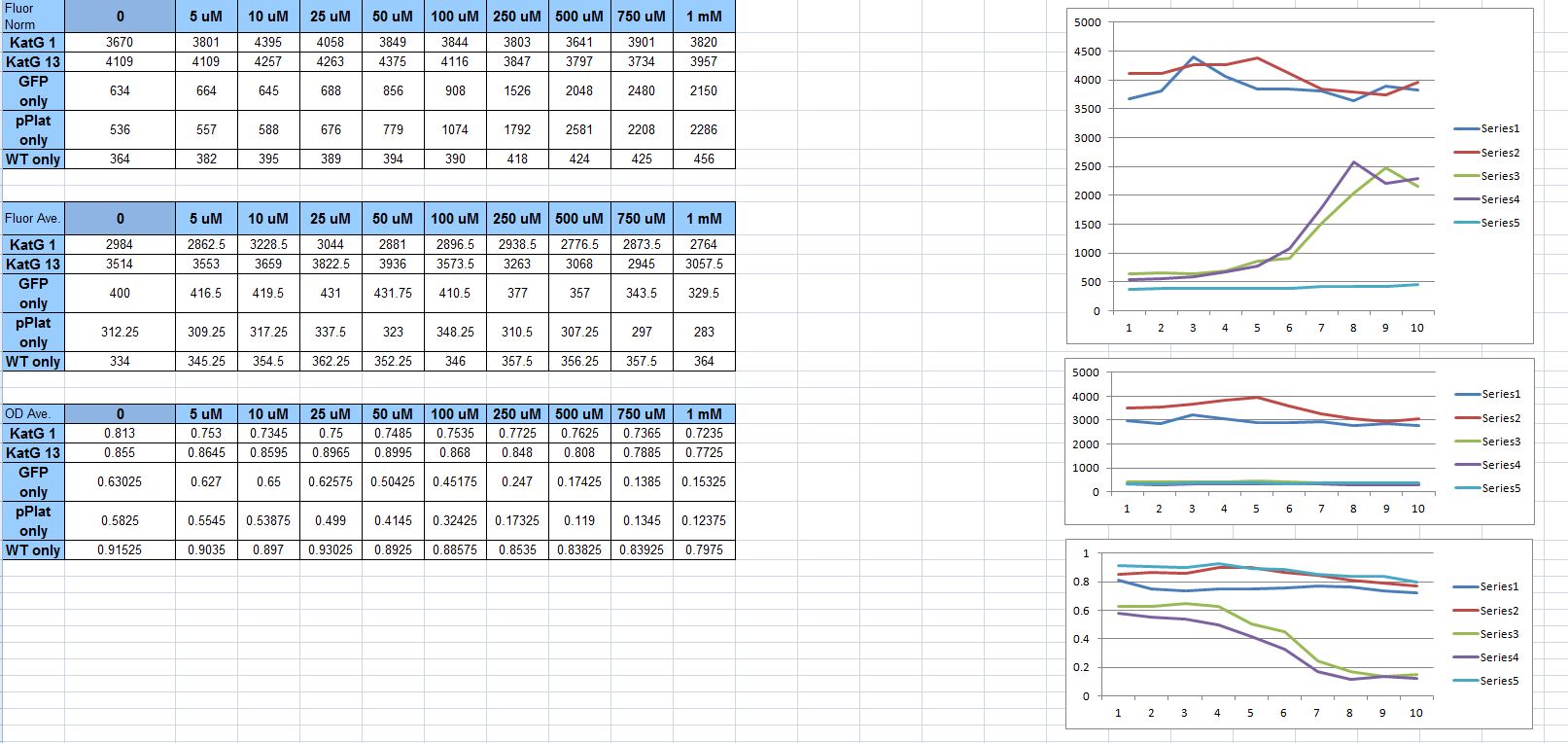Team:BYU Provo/Project
From 2011.igem.org

|
Contents |
The Problem
The American Cancer Society has found that 1 in 20 Americans will have colorectal cancer. While current screening methods have led to a decrease in fatalities, the Society estimates another 50,000 people will die from colorectal cancers this year alone. As the disease progresses, it becomes harder to successfully treat, making early detection important. Regular non-invasive screening could save tens of thousands of lives each year in the United States alone.
A Bioengineered Solution?
We think that E. coli could be engineered using simple interchangeable parts to act as an effective biosensor for colorectal cancer.Dual-Input 'AND' Gate
We learned from the literature that polyps in the colon and rectum frequently have higher temperatures and higher concentrations of reactive oxygen species (ROS) than normal tissue. While either of these could potentially serve as an input to our biosensor, it is the elevation of both heat and ROS that makes polyps so unique in the human body. We have devised a simple molecular 'AND' gate such that only in the elevated presence of both inputs will our marker protein be translated.
Visit our Modeling Page for more detailed information on the AND gate and how it works.
The Simple Interchangeable Parts
Please give the presentation thirty seconds to load after you press the 'play' button below. "Autoplay" can be selected under the "More" menu in the bottom right corner once the presentation is ready. Alternatively, the presentation is interactive and can be maneuvered with the mouse.
Results
Thermosensor Results The following table summarizes the results of the random mutagenesis on the Lysteria thermosensor. We found two thermosensors with narrower temperature ranges, and four thermosensors with increased or decreased expression after melting. We are especially pleased with the narrowed temperature ranges of BBa_K619890 and BBa_K619891, which demonstrate the most narrow temperature sensitivity of any known riboswitches from our literature research.
| Part Number | Melting Range |
|---|---|
| BBa_K619889 | 30'C - 37'C |
| BBa_K619890 | 35'C - 37'C |
| BBa_K619891 | 30'C - 35'C |
| BBa_K619892 | 30'C - 37'C |
| BBa_K619893 | 30'C - 37'C |
| BBa_K619894 | 30'C - 37'C |
| BBa_K619895 | 30'C - 37'C |
| BBa_K619897 | Positive Control |
| BBa_K619898 | Positive Control |
OxyR Promoter Results Our OxyR results were inconclusive. Despite documentation in the literature about the reactive oxygen species (ROS)-inducible promoters katG, hemH and soxS, we were unable to produce consistent results demonstrating their usefulness as ROS sensors. The results of our final assay can be seen in the graphs below:
3 hour readings
5 hour readings
The graphs represent (from bottom to top) the OD, the raw fluorescence, and the normalized fluorescence (fluorescence/OD). The clustered lines on the bottom of the graphs are the negative controls (empty plasmid, promoter-less GFP) and a positive control for fluorescence. The top lines are the final versions of our katG promoters controlling GFP expression. The horizontal axis is ROS concentration, which increases from left to right.
As can be seen, there is no significant increase in fluorescence with increased ROS concentration. In the future, we hope to improve our assay in order to create a working ROS sensor.
Overall Results The AND gate function was very successful when using Pbad in place of the OxyR-inducible promoters. Pbad worked as an "arabinose sensor" which worked as proof of concept.
 "
"



